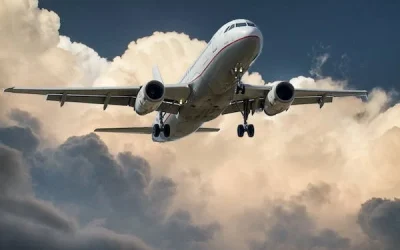CliqJets Consulting
Fostering Growth, Innovation, and Sustainability in Airline Operations
The Importance of Flight Mode: Ensuring Smooth Flight for Airline Passengers
In today’s digital age, staying connected is a necessity. However, when it comes to air travel, there’s one simple action that passengers often overlook but can significantly impact the safety and efficiency of their flight: switching their electronic devices to flight mode.
Flight mode, or airplane mode, is a feature available on most electronic devices that disables their wireless communication capabilities, including cellular, Wi-Fi, and Bluetooth connections. While some may see this as an inconvenience, there are compelling reasons why airlines require passengers to use flight mode during flights.
Flight Mode helps Prevent Interference with the Aircraft’s Communication
First and foremost, flight mode helps prevent interference with the aircraft’s communication and navigation systems. The signals emitted by electronic devices, such as smartphones and tablets, have the potential to disrupt crucial onboard systems, including radio frequencies used for communication with air traffic control and navigation equipment. By activating flight mode, passengers mitigate the risk of interference, ensuring that pilots can maintain clear and reliable communication with ground control and safely navigate the aircraft.
- How Nigerian Banks Can Leverage IDERA to Revitalize the Airline Industry
- Aircraft Leasing and the Role of IDERA in Nigeria’s Airline Industry
- Managing Stress and Fatigue: A Shared Responsibility
- Aviation Industry: A Call for Integrity and Intentional Change
- Nigeria Lost the USA FAA Category One Rating: #Implications
Cause Distractions for Flight Crew and Fellow Passengers.
Moreover, the use of electronic devices without flight mode can also cause distractions for flight crew and fellow passengers. Incoming calls, text messages, and notifications can disrupt the cabin environment and disturb others. By switching to flight mode, passengers demonstrate consideration for their fellow travelers and contribute to a more peaceful and comfortable flight experience for everyone onboard.
Conserve Battery
Additionally, using flight mode conserves battery life. Airplanes often fly at high altitudes with weak cellular signals, leading devices to expend extra energy searching for a connection. By activating flight mode, passengers can preserve their device’s battery life for the duration of the flight, ensuring they have sufficient power for essential tasks upon arrival at their destination.
Some passengers may be concerned about missing important calls or messages while in flight. However, most airlines now offer in-flight Wi-Fi services, allowing passengers to stay connected through the aircraft’s onboard network. Alternatively, they can enable Wi-Fi calling or use messaging apps that work over Wi-Fi to stay in touch with friends, family, or colleagues during the flight.
Conclusion
While it may seem like a minor inconvenience, putting electronic devices in flight mode is a crucial safety measure that all airline passengers should adhere to. By doing so, passengers help maintain the integrity of the aircraft’s systems, promote a peaceful cabin environment, and conserve battery life. So, the next time you buckle up for takeoff, remember to switch to flight mode and enjoy a smooth and uninterrupted journey to your destination.
Proudly powered by WordPress






0 Comments